Recently I wrote about my “First look of the new year into my hives” (February 13, 2023 Post), a check that I had performed a couple of days earlier. But on that visit, which is typical of my early looks in my hives of the year, I did not remove any frames, and look at them. I merely observed the honey bee cluster between the frames, after removing the lids. That gave me all the information that I needed at the time – that told me that the bees in the colony had survived the winter, and the size (number of bees) of the hive’s cluster. Now that we have had a period of warm weather it is time to remove frames and to take a closer look in our hives.
You may wish to review my earlier posts on reversing hive bodies and lighting your smoker – if you have difficulties either lighting your smoker, or keeping your smoker lit.
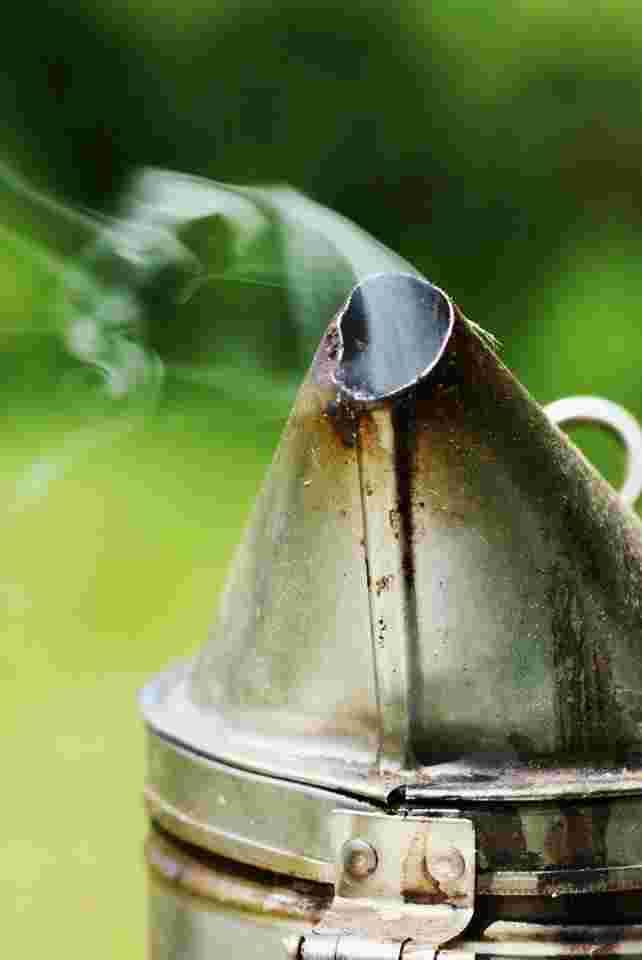
Why didn’t I remove frames in the earlier visit? It was barely in the 60sF, and a quick look at the opened hive’s cluster told me what I wanted to know in my first check. The fact that the colony was alive, and its cluster size. And this early check was also done while inserting Apivar strips (for varroa control) as early as January, and while replenishing sugar patties. (Just in case emergency winter feeding.) In this post I will describe what to look for in the hive when removing and examining frames.
What I do & look for?
In this visit I will look at all the frames in the brood boxes, though I expect at least some of the bottom boxes will be empty. And on those hives, I will reverse the hive bodies (see my March 1 post on reversing hive bodies). First – as I do when opening the hive when planning to remove the hive’s top box in the visit, I will first remove the outer cover and lay it on the ground with the top of the cover flat on the ground – upside down. And I will then remove the inner cover (smoking the bees as I pry up each lid), and removing the inner cover, I will lean it against the end of the hive just to keep it out of my way. And after removing the inner cover I will puff some smoke between the top of the frames. An old beekeeper I once know described this smoke as “telling the bees that I am coming”. Now I am ready to look in the top brood box.
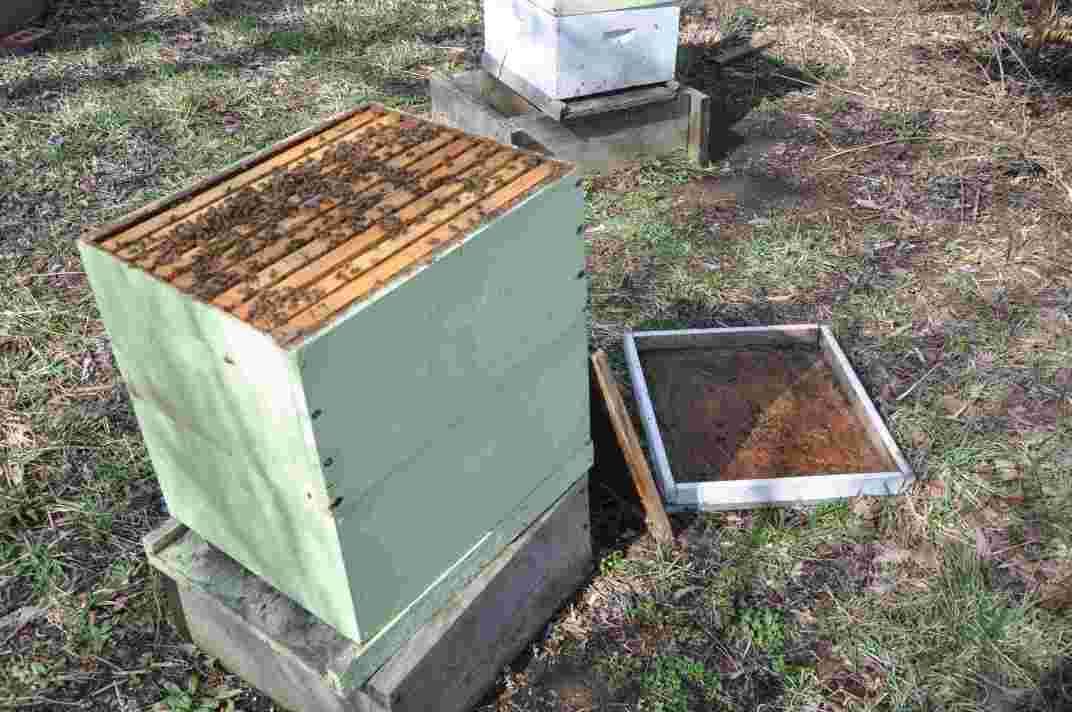
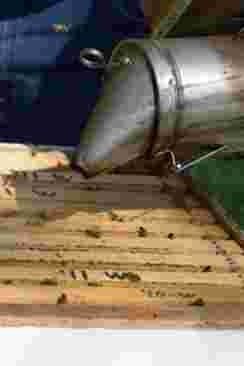 Photo by Mary Carney
Photo by Mary Carney
I will then start at one end of the brood box, and remove the end frame, though this time of year it will likely be empty – meaning the drawn comb will have nothing in it. I will remove this frame & set it on the ground out of my way. Removing this end frame is very important, as it gives me an empty space on this end of the brood box, so I can loosen & pull the next frame partly back into the empty space where I removed the first frame, then lift this frame out to examine it. Later in the year that first frame will not be empty, it will likely be full of honey, and I would again set it on the ground to give me that empty space. (More in a later post on why that end frame is likely full of honey.)
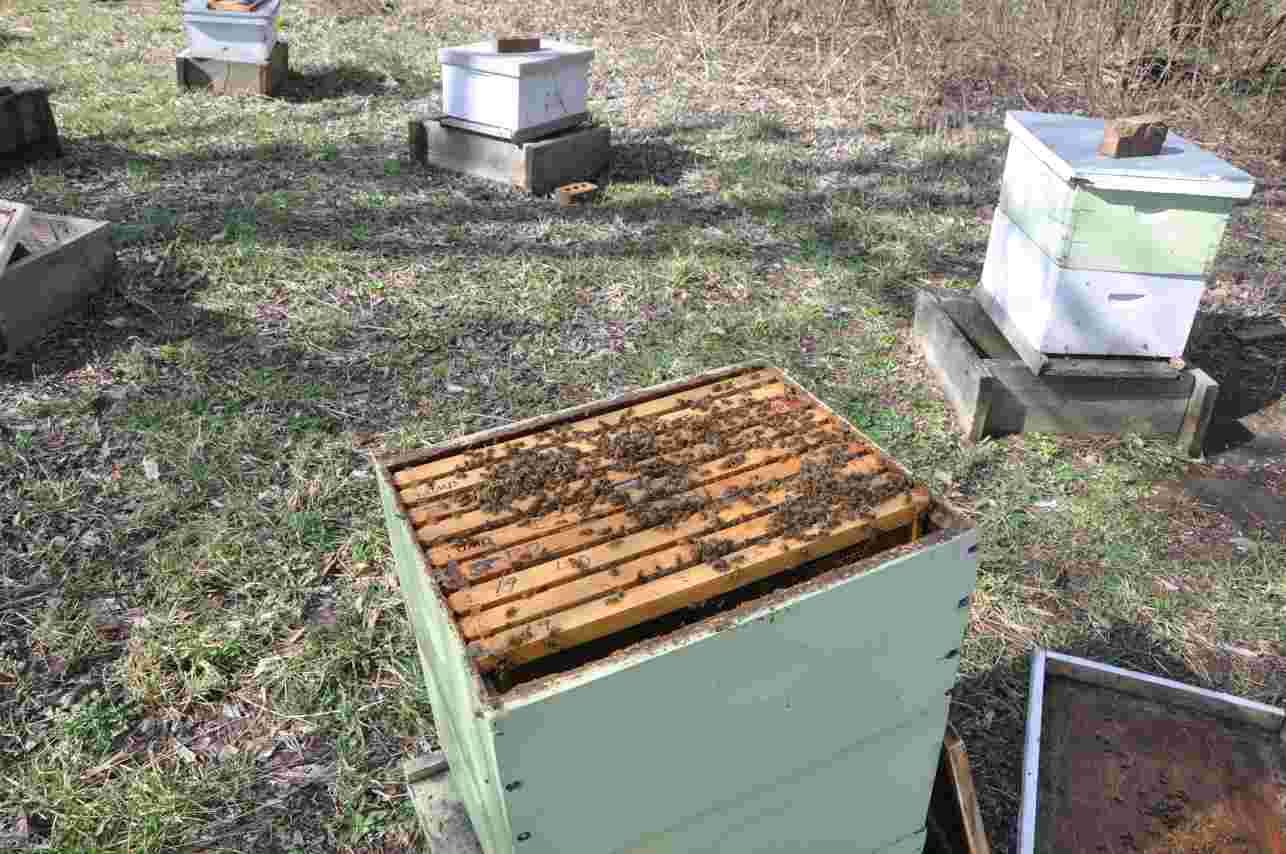
If the second frame is empty (which is possible this time of year), I will pull it back in the slot previously occupied by the first frame – again leaving me with an empty 2 frame space in which to pull back the next frame. I will repeat this removing a frame & then setting it back in the box, then pulling it back as I go through the box. I will now continue through the hive until I find a frame covered with bees – will likely first encountering a frame only covered with bees, or honey. As I examine each frame I will note how many frames are only covered in bees, or full of larvae or capped brood, or eggs, or pollen, and frames filled with honey. I will then record this information of what were in the frames in my Bee Book (my hives record book). Recording this information is very important to me, as it gives me a record of the condition of the hive for me after this visit, and before looking at the hive again. And this tells me what is going on in the hive. Is the queen laying eggs and is the colony raising larvae & brood. I always look at the notes for the previous visit before looking at it on the next visit, so I am aware of the changes in the hive.
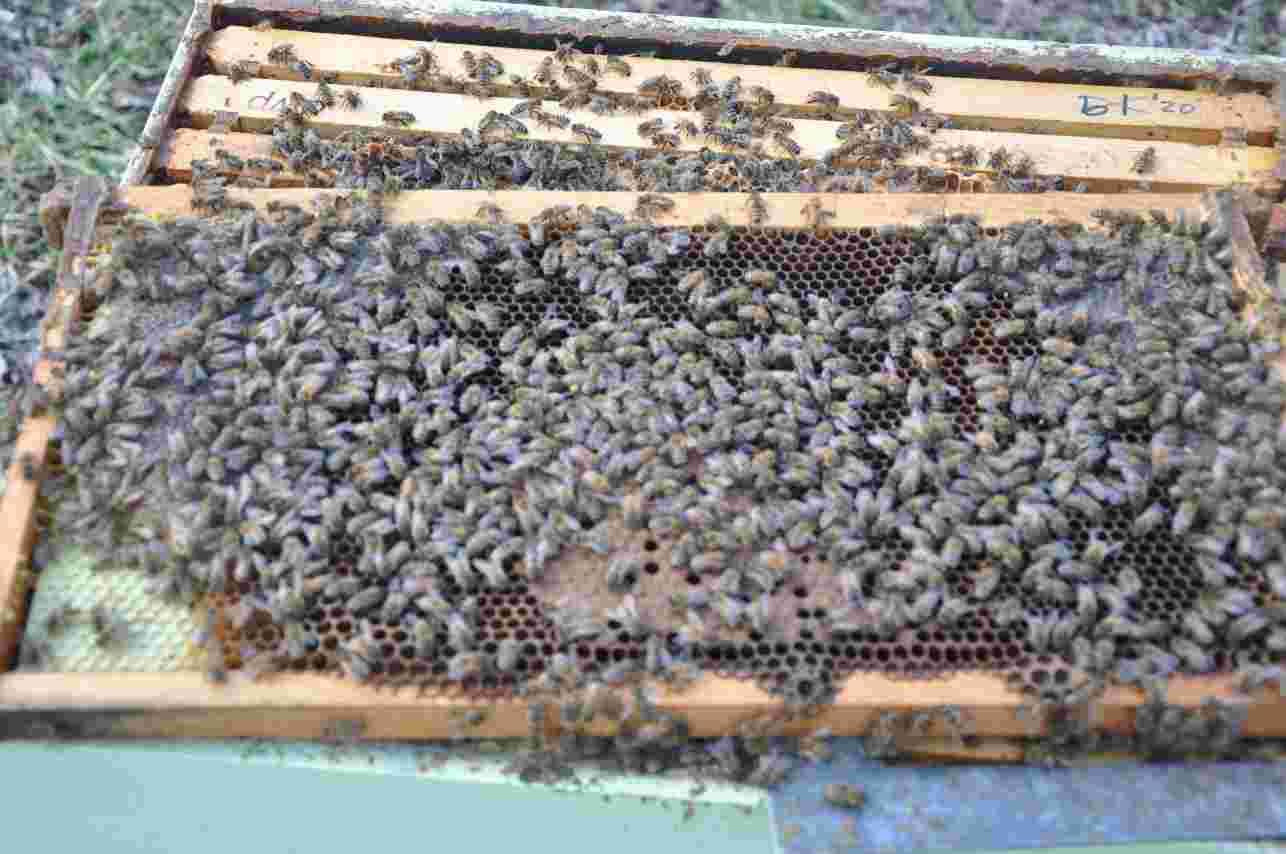
Notice that I did not mention that I was looking for the queen. This is not necessary, since if I saw eggs, or larvae, or even capped brood, I know that she was there recently. Though if I see her, I note that in my records. But seeing “signs” of her is good enough. On a later visit if I see her, I will mark her. More on that in later post as well. I will teach you a simple & safe method for marking your queens. If I do not see “signs of her” I will look more closely for her.
Before closing the hive (remember I have been describing looking in the top box), I will pry up the top box, lift it off the hive, and set it down at an angle onto the lid I left sitting on the ground when I removed it. (At an angle as to prevent squashing any bees on the bottom of the box.) Early in the spring all or most of the bees will be entirely in the top box. I say normally, as with honey bees & beekeeping there are always exceptions. If this bottom box is empty of bees – I will temporarily remove the box, and move what had been the top box onto bottom board , then set it back on the hive stand). I will then sit the empty bottom brood box on top of what had been the top box. I have now reversed the hive bodies. If the bottom box contains bees and brood – which means the colony has already begun moving into the bottom box on their own, I will not reverse the hive bodies, but I will look through this box, as I did the top box.
You have now completed your inspection of your hive. I always perform hive checks looking for the same things, and I make note of the in my Hive Record Book:
- Frames covered with bees.
- Frames of brood, including frames of larvae & capped brood, and frames containing eggs.
- Frames of honey, capped honey, or fresh nectar being brought into the hive.
- Frames of pollen (I will also note if the bees are carrying into the hives fresh pollen on their legs.
Though on some later visits, depending on the time of year, I may be concentrating on certain thigs, like frames of brood or frames of honey. More about that in future posts.